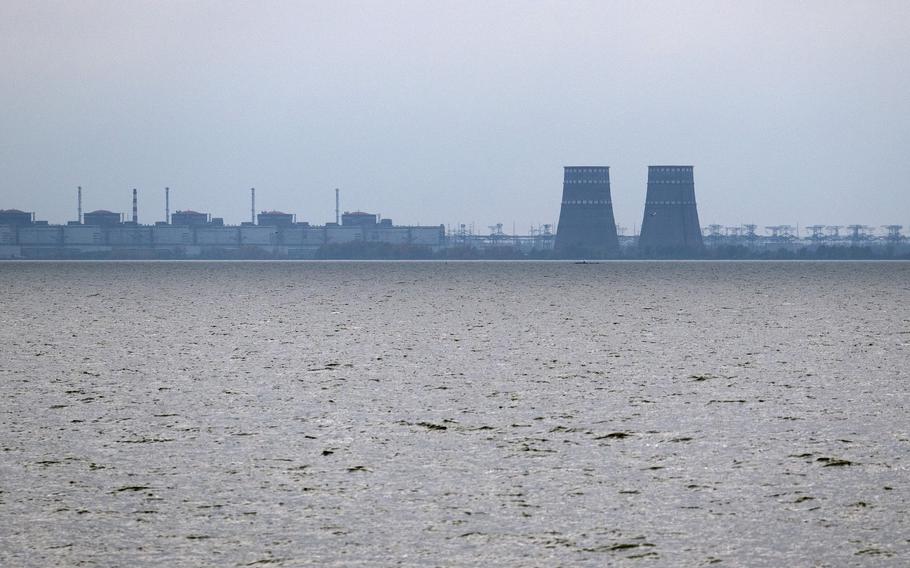
In this file photo, Zaporizhzhia Nuclear Power Plant, Europe’s largest nuclear power station and currently held by Russian occupying forces, is pictured on Oct. 29, 2022, from Prydniprovske in Dnipropetrovsk oblast, Ukraine. (Carl Court, Getty Images/TNS)
(Tribune News Service) — Concerns intensified that a Russian-occupied nuclear reactor in southern Ukraine could be the target of fresh attacks as Kyiv and Moscow traded barbs over the potential of a radiological incident.
Ukrainian President Volodymyr Zelenskyy reinforced a warning overnight that Russia may be planning to sabotage the Zaporizhzhia Nuclear Power Plant, which Moscow’s forces have occupied since the start of the war. The Kremlin responded Wednesday that the government in Kyiv is planning a provocation.
“We have information from our intelligence that Russian troops have placed objects resembling explosives on the roof of several power units” at Zaporizhzhia, Zelenskyy said in his nightly address to the nation. The objects may also be used to “simulate” an attack, he said.
Inspectors from the United Nations International Atomic Energy Agency have reported that they’ve seen no evidence of anti-personnel mines installed within the plant’s grounds that could endanger reactor safety. IAEA monitors at the facility continue to monitor the situation, a spokesperson said.
The nuclear plant, the largest in Europe, has been the target of artillery, drone and rocket attacks on and off for more than a year, with Ukrainian and Russian official blaming each other for the strikes. UN monitors were installed at Zaporizhzhia in September in order to assess risks.
A U.S. Air Force decision to dispatch its Boeing WC-135R Constant Phoenix aircraft to Greece on June 30 has fueled speculation that it could be linked with threats to Zaporizhzhia. The aircraft, which can register radioactive releases in real time, played a crucial role in detecting debris from the 1986 Chernobyl nuclear meltdowns, according to the Air Force.
The Pentagon didn’t immediately return requests for comment. The Air Force has said the aircraft is routinely deployed in the Mediterranean Sea.
The sensitivity to an attack has intensified since last month’s destruction of the Kakhovka dam, triggering catastrophic flooding and draining water from a reservoir used for the plant’s cooling system. Ukrainian emergency services in recent days have conducted drills in four regions around the Zaporizhzhia plant to prepare for a fallout from an attack.
Ukrainian intelligence flagged a potential incident in late June, around the same time that Sens. Lindsey Graham and Richard Blumenthal introduced a bipartisan resolution that warned a Russian radiological attack could trigger a wider North Atlantic Treaty Organization involvement in the conflict.
“You can expect a massive response from NATO,” Graham said in a statement. “You will be at war with NATO.”
Even without a direct attack on Zaporizhzhia’s six reactors or nearby spent-fuel pond, the safety situation remains tenuous. Just 24 hours after engineers re-installed an outside power cable connected to Russian-controlled territory, the IAEA reported that electricity flows stopped from a line controlled by Ukraine.
Unlike coal or gas plants, nuclear reactors need a constant flow of outside power to keep pumps running.
“The latest power line cut again demonstrates the precarious nuclear safety and security situation at the plant,” IAEA Director General Rafael Mariano Grossi said late Tuesday.
Radiation levels at the plant remain within normal boundaries, according to data provided by operators.
With assistance from Kateryna Choursina.
©2023 Bloomberg L.P.
Visit bloomberg.com.
Distributed by Tribune Content Agency, LLC.